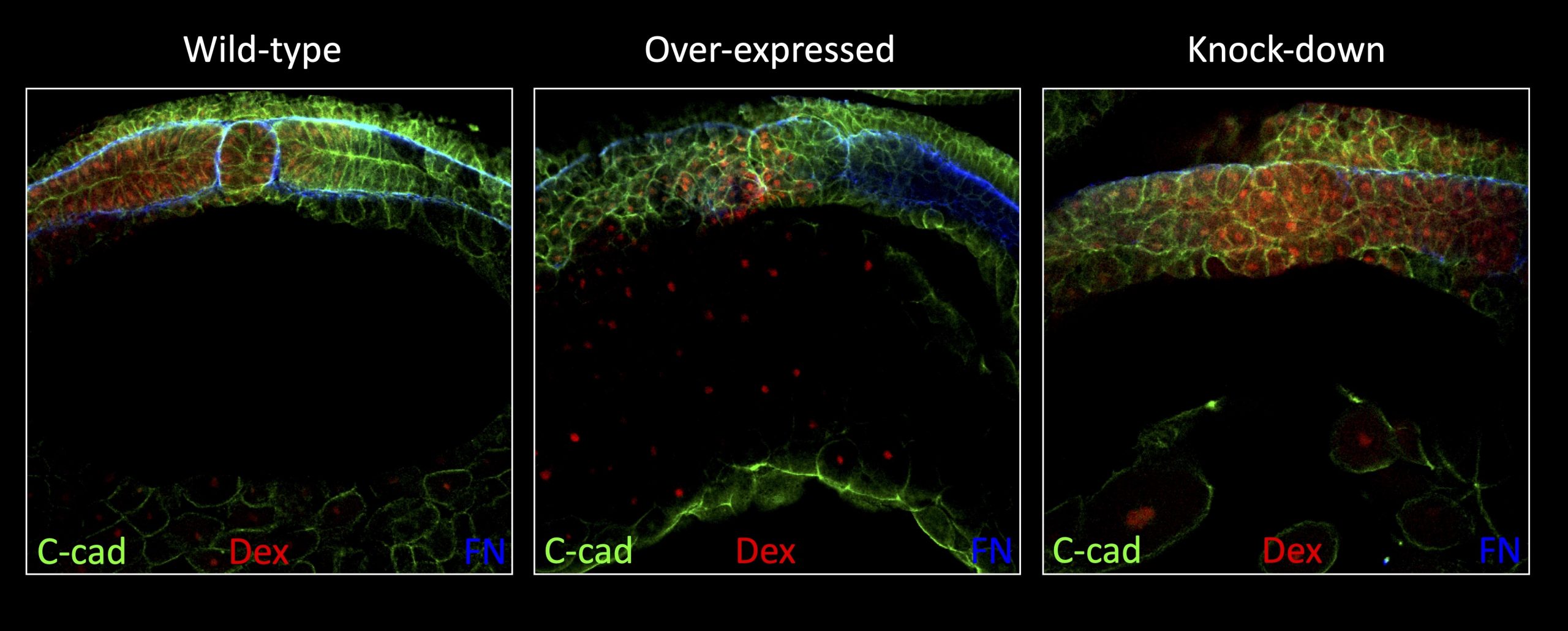The overall goal of our research is to better understand how regulated cell-cell adhesion drives tissue morphogenesis during early embryonic development. In general, perturbation of tissue fusion, cell adhesion, or cell sorting can lead to numerous birth defects, including early gross gastrulation defects, spina bifida, and congenital heart diseases. Additionally, aberrant cell sorting and tissue separation are major components of tumorigenesis. A deeper understanding of the mechanisms governing cell sorting and
tissue separation will have application not only to developmental biology in general, but also to the development of congenital and adult disease states. We are specifically interested in how a family of cell adhesion molecules, called protocadherins, are involved in directing cell sorting events in the development of the notochord in the early gastrula stage embryo.
Our initial focus is on a protocadherin called axial protocadherin (axpc). This molecule is critically important for notochord morphogenesis, as both knockdown and overexpression result in abnormal notochord formation.  However, it is currently unknown how axpc facilitates this process and what molecular partners it is working with. Current research is aimed at addressing these two questions.
However, it is currently unknown how axpc facilitates this process and what molecular partners it is working with. Current research is aimed at addressing these two questions.
We use the amazing model system Xenopus laevis to address our research questions. This well established model system allows for easy manipulation and visualization of the developmental process, while providing insight into fundamental biological principles.
